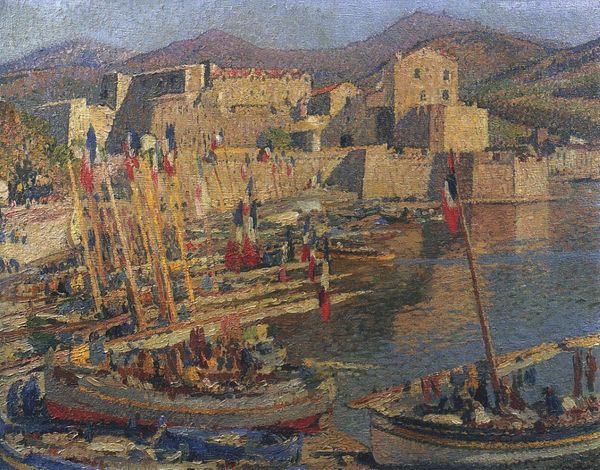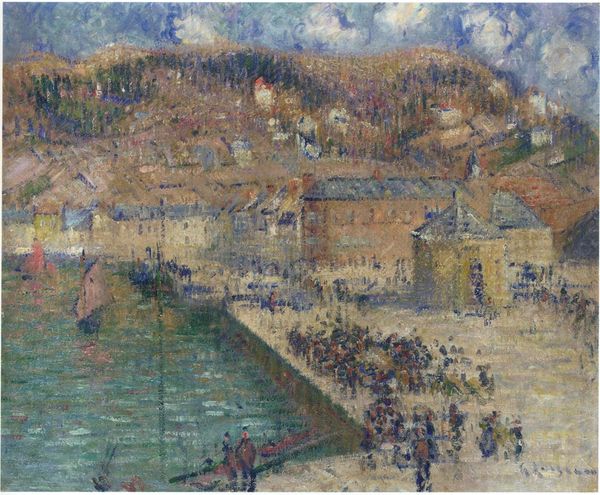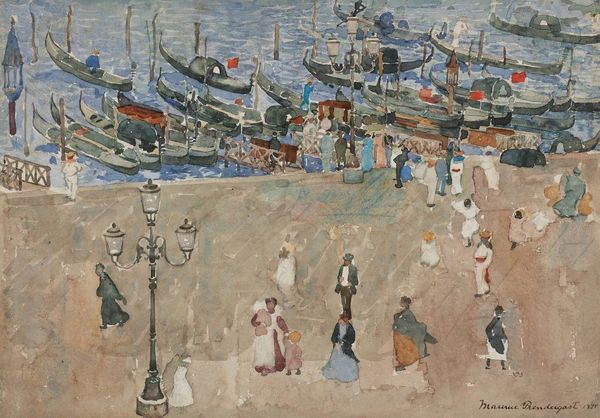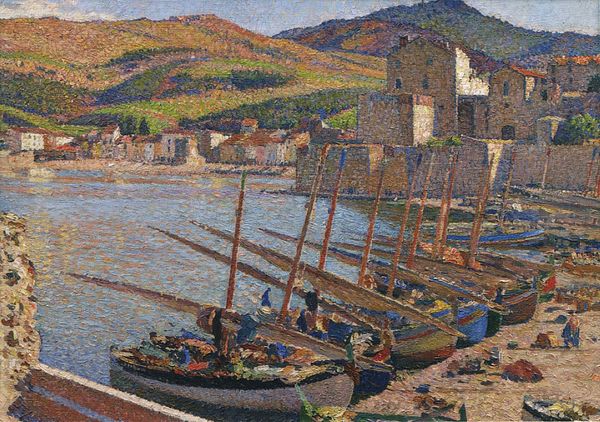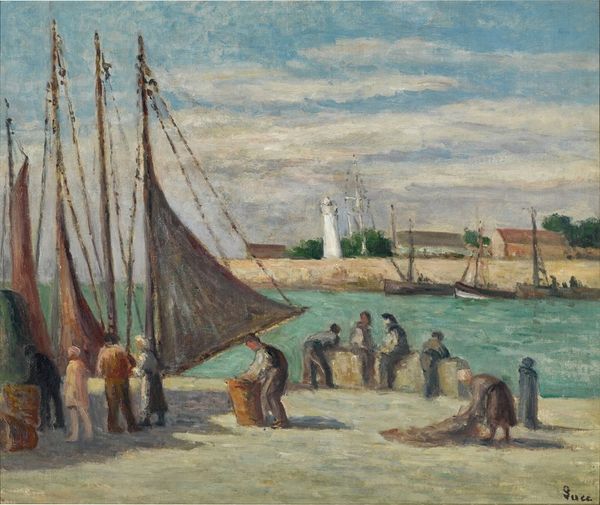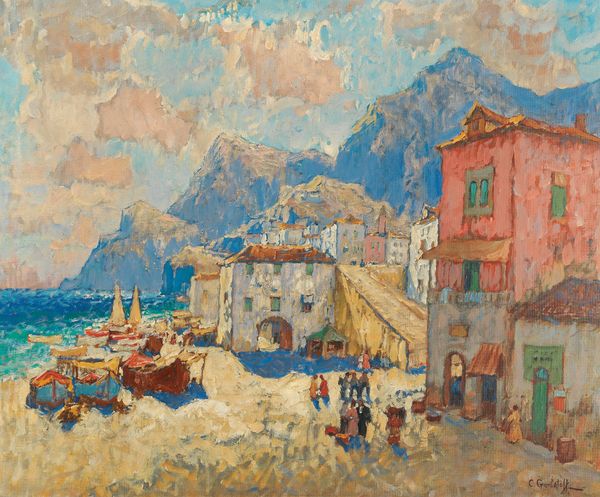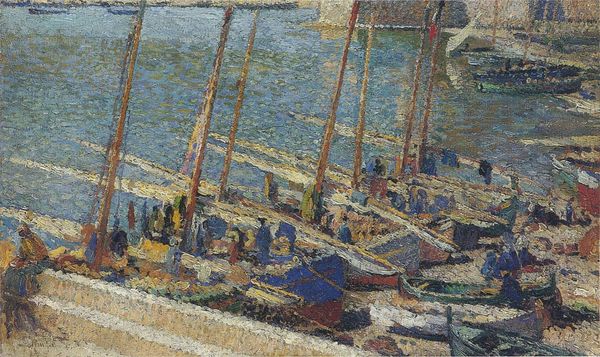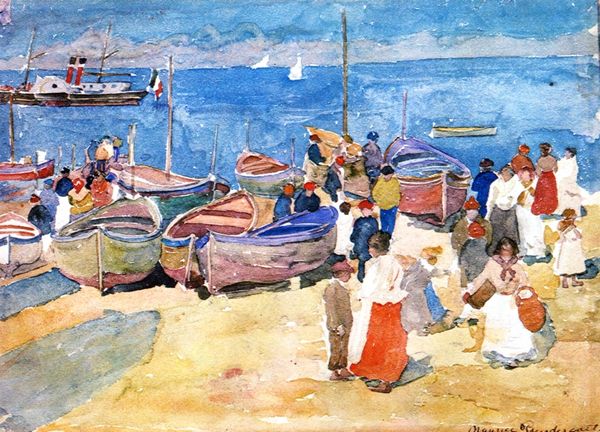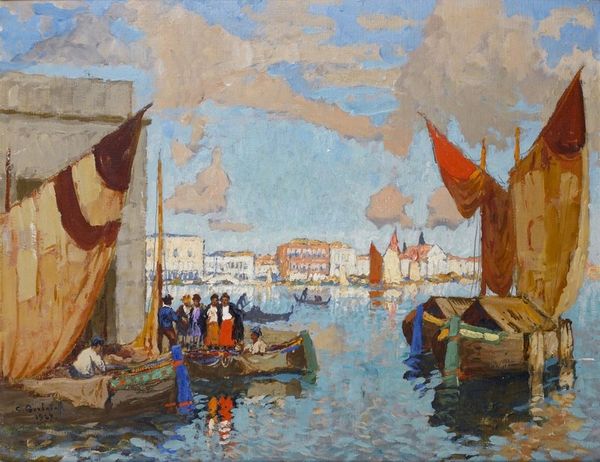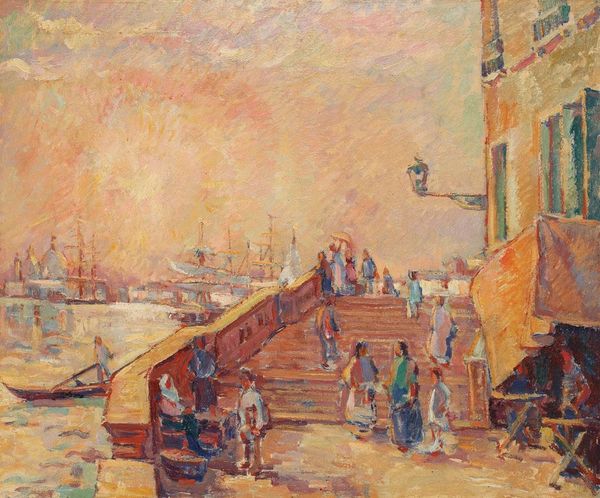
Copyright: Public domain
Curator: Looking at Henri Martin's "Fishing Boats at Collioure," painted around 1895, the first thing I feel is warmth, a Mediterranean sun soaking into stone and sail. It has a dreamy, almost mythical quality. Editor: It’s interesting you say that, because for me, the intense labor of the everyday is what stands out. All those tiny dots of oil paint – they remind me of the repetitive, physical work that went into building boats and sustaining this town. You can almost feel the weight of the nets being hauled. Curator: Absolutely, and those pointillist dots create such a unique texture. Up close, it's this vibrant mosaic, but step back, and the scene coalesces into something quite magical. Do you think Martin was conscious of evoking that sense of effort? Editor: I think he was acutely aware of depicting a working port, absolutely. He's showing us not just pretty boats, but also the entire infrastructure of the fishing industry – the nets laid out to dry, the buildings supporting the harbor, and the figures bustling across the landscape. This image isn't divorced from its production context; it embraces it. It asks us, what's the cost to produce the goods this society values? Curator: And yet, those figures are almost swallowed by the landscape, rendered with the same shimmering dots as the water and the stone. Is he celebrating or criticizing? It's ambiguous, which is what makes the piece so compelling. He wasn't shy to engage complex perspectives, often melding an ethereal aesthetic with stark reality. I almost imagine it, myself as a figure amongst the others; a point of the brush alongside the working class, feeling both connection and transience. Editor: Yes! He definitely softens any potentially harsh social critique through this choice of the plein-air method, observing people while being exposed to real life. In using impasto to apply the pigment in these little bursts, this invites the question—how many working people participated to enable his participation in this type of environment, at this moment? Who were those people? Who were their hands? Curator: The questions never end, do they? I suppose that’s the beauty of a great piece; they endure not just by what is presented on the canvas, but what’s unearthed within each person that gazes upon them. Editor: That's it—ultimately, art becomes what we bring to it. Thank you, this has helped me appreciate this image more deeply.
Comments
No comments
Be the first to comment and join the conversation on the ultimate creative platform.
